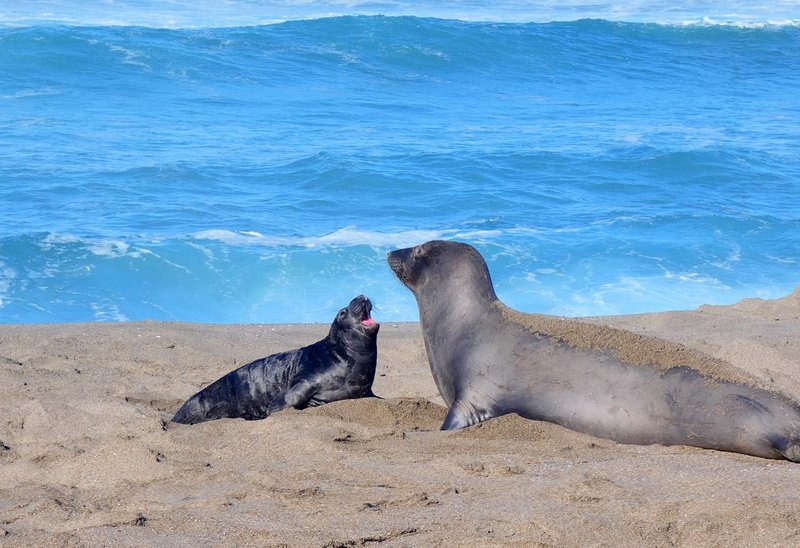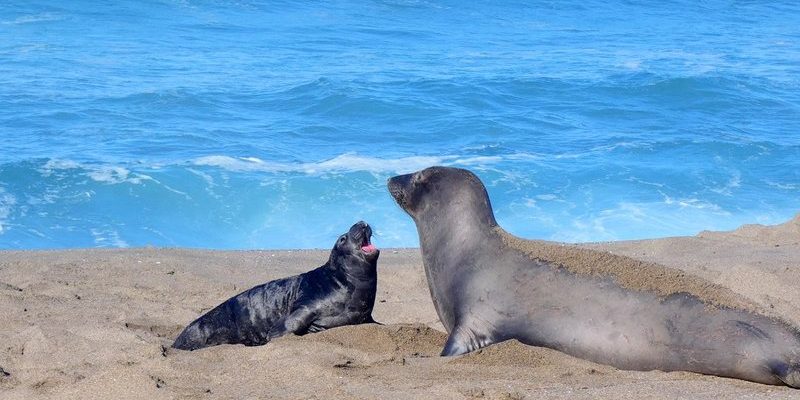
Elephant seals, with their impressive size and unique characteristics, are often seen lounging on beaches along the Pacific Coast. However, their very existence is being threatened by environmental changes. Climate change affects everything from food availability to breeding patterns, leaving these seals in a precarious situation. Let’s dive into the different ways climate change is impacting the elephant seal population and what it means for their future.
Understanding the Elephant Seal’s Habitat
Elephant seals are large marine mammals that spend most of their lives in the ocean, only coming ashore to breed and molt. Their primary habitats are the beaches along the California coast, particularly near the Channel Islands and Año Nuevo State Park. These areas provide safe resting spots where they can bask in the sun and nurse their young.
Unfortunately, these prime beach spots are under threat. Rising sea levels due to melting glaciers and ice caps mean that some of these beloved beaches are slowly disappearing. Imagine your favorite park shrinking because of rising water—it’s a tough reality for these seals. If they can’t find safe places to rest or breed, their population could take a significant hit.
Impact of Ocean Temperature on Food Supply
Here’s the thing: elephant seals rely heavily on a diet of fish and squid. The availability of these food sources is closely linked to ocean temperatures. As climate change warms the oceans, it alters the distribution of fish stocks and can lead to decreased prey availability.
If the seals can’t find enough food, they face malnutrition, which can affect their ability to reproduce and nurse their pups. A mother seal that isn’t healthy may not be able to feed her young properly, making it a double whammy for their population. It’s like trying to build a house with a shaky foundation; without enough food, the entire structure—meaning their population—could collapse.
Changes in Migration Patterns
Elephant seals are known for their incredible migrations, traveling thousands of miles from their breeding grounds to feeding areas. However, as ocean conditions change, their migratory patterns are also shifting. Warmer waters may push their food sources further away or lead them to areas that are more difficult to navigate.
This change in migration can cause them to expend more energy just to find food. When seals have to swim farther or navigate through unfamiliar territories, they risk becoming exhausted or even getting lost. It’s a bit like trying to find your way in a new city without a map—frustrating and tiring.
Breeding Challenges Due to Climate Change
Breeding is a crucial part of the elephant seal’s life cycle. Typically, females give birth on beaches during the winter months. However, as climate change affects weather patterns, these breeding seasons could be thrown off track. An unusually warm winter could cause early births, leading to pups that aren’t as well-prepared for survival.
Also, if hotter weather leads to overcrowded beaches, mothers might struggle to find safe places to nurse their pups. This overcrowding can result in increased stress and competition for limited resources, further complicating the survival of the next generation. Picture it as a crowded restaurant where you can hardly hear yourself think; it makes for a stressful dining experience, and for these seals, it’s life or death.
Increased Threats from Predators
As their habitats and food sources shift, elephant seals also face increased threats from predators. With climate change influencing the migration of various species, predators may start venturing into areas where seals are common. This could lead to more seal pups being taken by hungry sharks or other marine animals.
Imagine if your neighborhood suddenly had more stray dogs; you’d be on high alert, right? That’s what it’s like for the seals. Increased predation can significantly reduce pup survival rates and threaten the overall population.
Conservation Efforts and Hope for the Future
The good news is that many organizations are working hard to protect elephant seals and their habitats. Conservation groups are conducting research to understand how climate change affects these animals. They are also working to restore and protect crucial beach habitats.
By creating marine protected areas, these organizations help ensure that seals have safe spaces to breed and feed. You might be wondering how you can help; even small actions, like reducing your carbon footprint or supporting wildlife conservation efforts, can make a difference. Every little bit counts when it comes to protecting our planet and its incredible creatures.
The Importance of Awareness and Action
Understanding how climate change is affecting the elephant seal is vital. Awareness is the first step toward meaningful action. When we learn about the challenges these seals face, we can advocate for policies that protect their habitats and promote sustainability.
It’s like joining a community for a common cause; when we come together to address climate change, we’re not just helping elephant seals—we’re also protecting countless other species and, ultimately, ourselves. The fate of these seals serves as a reminder of the interconnectedness of all life on Earth. What happens to them can have ripple effects throughout the ecosystem.
In conclusion, climate change poses significant threats to the elephant seal population, from habitat loss and food shortages to altered breeding patterns and increased predation. However, with awareness and concerted conservation efforts, we can help these remarkable animals adapt to a rapidly changing world. By coming together to combat climate change, we’re taking vital steps to ensure that future generations will continue to hear the sounds of elephant seals echoing along our coastlines.

